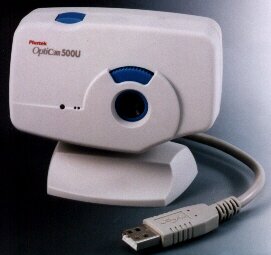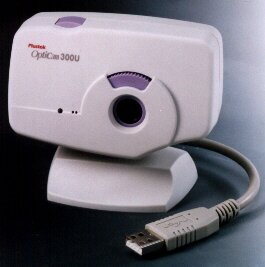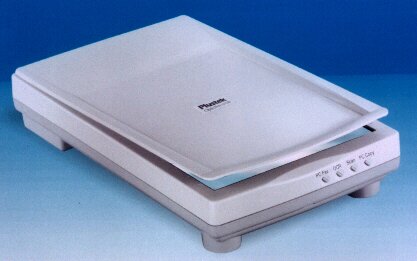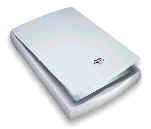 |
|---|
| |

|
|
|
|
|
 OptiCam 500U: This camera is great for capturing still and video images. This camera can also be used to share your live video with your friends and family. The Opticam 500U connects to a USB port making it easy to use with desktop computers and laptops equipped with USB ports. OptiCam 500U: This camera is great for capturing still and video images. This camera can also be used to share your live video with your friends and family. The Opticam 500U connects to a USB port making it easy to use with desktop computers and laptops equipped with USB ports.
|
|
|
 OptiCam 300U: Use this camera to capture still and video images. The camera is equipped with a button that allows you to capture still images just by pressing it. OptiCam 300U: Use this camera to capture still and video images. The camera is equipped with a button that allows you to capture still images just by pressing it.
|
|
|
|
|
|
|
 The OpticPro U12B is a 36 bit scanner that is easy to use and install. Its four buttons will simplify your scanning process. You can use these buttons to Fax, copy, OCR or scan. The OpticPro U12B is a 36 bit scanner that is easy to use and install. Its four buttons will simplify your scanning process. You can use these buttons to Fax, copy, OCR or scan.
|
|
|
 The OpticPro P12 is a small scanner that has an optical resolution of 600x1200 dpi, allowing you to scan up to 9600 dpi with software interpolation. The OpticPro P12 connects to your parallel port of your computer. The OpticPro P12 is a small scanner that has an optical resolution of 600x1200 dpi, allowing you to scan up to 9600 dpi with software interpolation. The OpticPro P12 connects to your parallel port of your computer. |
|
|
 The Plustek OpticPro 1212U is a scanner that is easy to use and to install to any computer with a USB port. Its USB connections allows for fast scans. In addition, the OpticPro 1212U is capable of scanning color images at 36-bit (68 billion colors) at resolutions between 50 and 1200 dpi or up to 9600 dpi interpolated. The OpticPro 1212U comes with Micrografx Picture Publisher, Photo Deluxe 2.0 and TextBridge Classic OCR. The Plustek OpticPro 1212U is a scanner that is easy to use and to install to any computer with a USB port. Its USB connections allows for fast scans. In addition, the OpticPro 1212U is capable of scanning color images at 36-bit (68 billion colors) at resolutions between 50 and 1200 dpi or up to 9600 dpi interpolated. The OpticPro 1212U comes with Micrografx Picture Publisher, Photo Deluxe 2.0 and TextBridge Classic OCR.
|
|
|
 |
| Pixel by Pixel Technology |
|
High-end color alignment technology moves into consumer grade scanners
One of the factors that separated high-end scanners from their lower end counterparts was the scanner's ability to properly align colors. A scanner with poorly aligned colors will produce an image that appears blurred. "Pixel by Pixel" is a technology that is similar to the technology found in professional-grade flatbed and drum scanners and will make its way into consumer-level scanners this year. Pixel by Pixel's significance is that it will finally dramatically reduce the poor color alignment and overlapping problems caused by the current "Line by Line" scanning system.
How "Line by Line" Works When an image is scanned, the information is first captured by the CCD's (Charge Couple Device) photo sensors. In the current Line by Line system, the CCD captures the red, green, and blue information simultaneously, but the final processing of these colors are done separately before being sent to the software. Unfortunately, misalignments of color occur because the scanner's motor is in continual motion and must rely on a timing system that does not allow perfect synchronization. This color misalignment problem could only theoretically be corrected if the scanner's motor were to physically stop completely before each line is scanned. The result of a Line by Line color misalignment can be seen when zooming in on an image or portion of a text document scanned in a color mode (see Figure A).
How "Pixel by Pixel" Works Pixel by Pixel technology is different from Line by Line because it takes the CCD's information and then processes all three color channels simultaneously. Because of this, there is little misalignment problems inherent with a scanner using Pixel by Pixel technology. Colors are sharp and the image itself appears more properly focused. Keep in mind that Pixel by Pixel and Line by Line technologies have nothing to do with single-pass or three-pass technology. These other technologies refer to the number of times the image must pass over the CCD before they are processed. Pixel by Pixel and Line by Line refer to the actual processing stage itself.
Testing a Scanner for Pixel by Pixel Capability Pixel by Pixel technology is not marketing hype. Indeed, the results of Pixel by Pixel scans are very clearly seen, even by typical non-professional scanner users. To determine if a particular scanner uses Pixel by Pixel technology, scan a page of black text in RGB color mode. After scanning the image, zoom in to the edges of the text and magnify it. If you can see small bits of green, red, blue, or other colors, then this is a scanner that uses a Line by Line system (see Figure A.). A scanner using a Pixel by Pixel system (see Figure B.) will show little or no extra colors, even under very heavy magnification.
Figure A. A line by line scanner showing the typical misaligned red, green and blue color values (character scanned in color, 300 dpi, magnified 350%)
Figure B. A scan created with Pixel by Pixel technology shows accurate color alignment (text scanned in color, 300 dpi, magnified 350%) |
Back to the Top |
| Where to Buy | News & Features | Software Updates | Reseller Information | Product Registration |Table of Contents |
Contact with any questions or comments concerning this site.
|